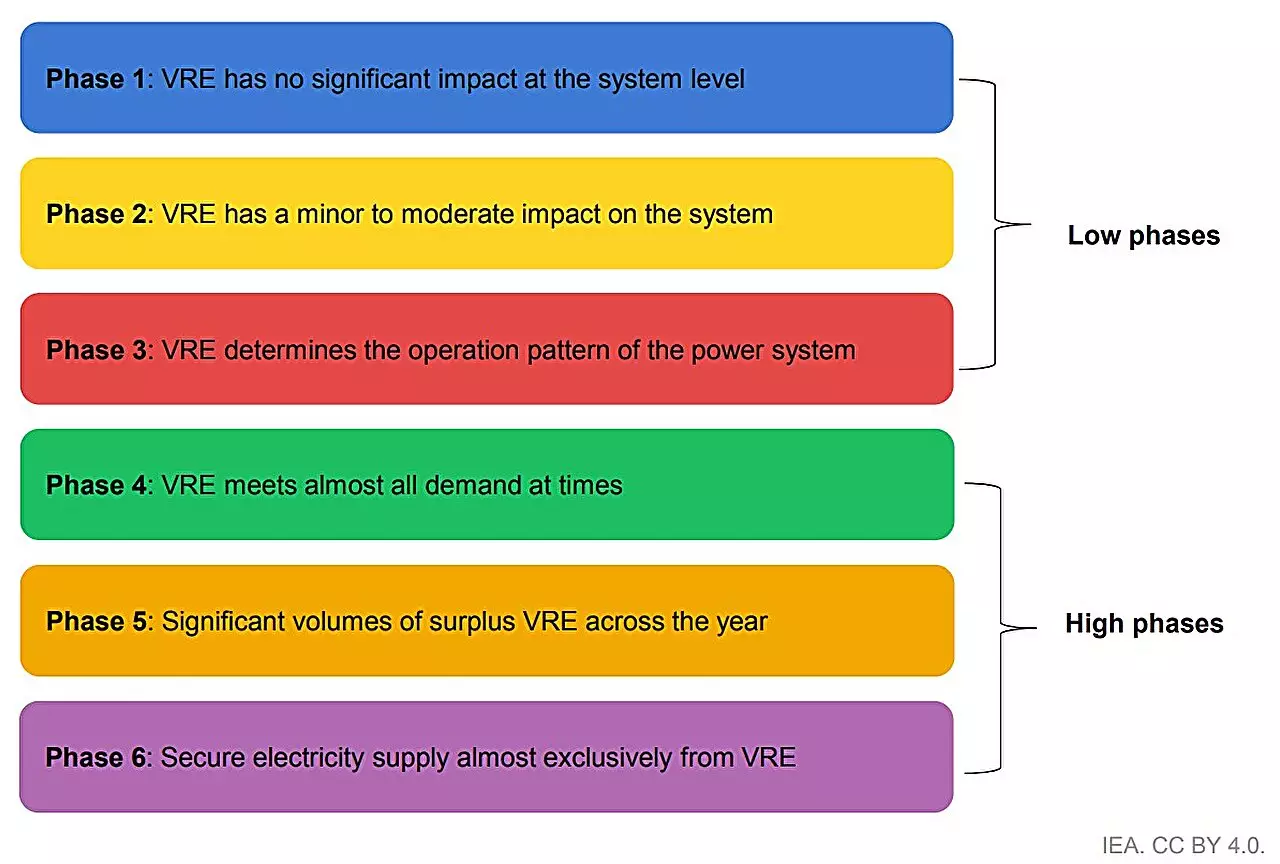The rapid proliferation of solar photovoltaic (PV) and wind energy technologies is transforming the global energy landscape. Recent findings from the International Energy Agency (IEA) illuminate a critical reality: as these renewable sources gain traction, effective integration into existing power systems is essential for harnessing their full potential. Between 2018 and 2023, the global capacity for these renewable technologies more than doubled, mirroring the growing demand for greener and more sustainable energy solutions. This trend is bolstered by government initiatives aimed at both enhancing energy security and significantly reducing greenhouse gas emissions.
What is particularly striking is that solar and wind energy together represent vital tools for achieving substantial decarbonization in the electricity sector. According to the IEA, these two sources are set to account for approximately two-thirds of the global trajectory toward net zero carbon dioxide (CO2) emissions by mid-century. However, this ambitious vision hinges on overcoming the challenges associated with integrating variable renewable energy (VRE) into the established electricity grid.
While the benefits of expanding solar and wind capacity are evident, the report highlights a critical warning: failure to implement timely integration measures could lead to a significant loss of these advantages. According to the analysis, delaying action could result in a staggering 15% reduction in electricity generation from these renewable sources by 2030. This could also mean a decrease in their total contribution to the global electricity mix by as much as five percentage points. Such outcomes would undercut the very purpose of transitioning to cleaner energy alternatives.
Keisuke Sadamori, the IEA Director of Energy Markets and Security, articulates this concern: nations must intensify their efforts to integrate these technologies into their power systems. As countries grapple with the imperative for sustainability, they must not only invest in renewables but also adopt strategic frameworks that facilitate their seamless incorporation into existing grids. The IEA’s report serves as a clarion call, urging policymakers to address these integration hurdles with the urgency they merit.
One groundbreaking aspect of the IEA report is its comprehensive assessment of integration measures across 50 diverse power systems, which collectively account for a significant share of the world’s solar PV and wind energy generation. This global stocktake offers valuable insights into not only the challenges but also the successful strategies employed by leading nations in renewable energy integration.
In a scenario where countries maintain their commitments to energy and climate goals, those with lower shares of variable renewables stand to generate two-thirds of the growth expected by 2030. Interestingly, these nations can often enhance their renewable energy deployment without the need for sweeping systemic changes. They can adopt established practices such as improving the flexibility of existing energy assets or enhancing forecasting capabilities to adapt gradually and effectively to increasing renewable outputs.
However, as renewable energy penetration rises, more significant challenges invariably arise. Nations such as Denmark, Ireland, South Australia, and Spain have demonstrated notable success in navigating these complexities. Their experiences reveal that developing advanced storage systems and innovative power grid technologies can be instrumental in managing the inherent variability of solar and wind energy.
The IEA emphasizes that while many technological solutions to address these challenges are either developed or in advanced stages of readiness, the effective implementation of these strategies will largely depend on proactive policy action rather than a mere reliance on technological innovation.
The integration of higher levels of variable renewables necessitates a fundamental re-evaluation of traditional energy systems. Policymakers must adopt a global perspective and act decisively to address the integration challenges as renewable energies continue to advance at an unprecedented rate. By fostering an environment that prioritizes flexibility and stability within power systems, countries can not only meet their climate objectives but also create a more sustainable, resilient energy future for all. The time for action is now; the stakes have never been higher.


Leave a Reply